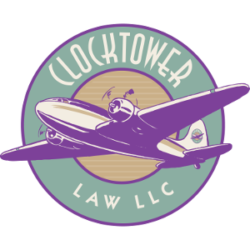Let’s pretend for a moment that it is early 1999, and Stephen Hillenburg, the creator of Spongebob Squarepants, has contacted me for advice about protecting his intellectual property.
By Erik J. Heels
First published 10/13/2003; Mass High Tech; publisher: American City Business Journals.

If you have kids, you have probably heard about Spongebob Squarepants, the popular TV show on the Nickelodeon television network. Spongebob Squarepants debuted on 05/01/99 and quickly became the number one show for kids (http://www.viacom.com/press.tin?ixPressRelease=45001284). It later moved to prime time and became a hit with adults (present company included). But let’s pretend for a moment that it is early 1999, and Spongebob’s creator Stephen Hillenburg has contacted me for advice about protecting his (as Sandy would say) “little square dude.” Here is what I would have advised him.
Register Multiple Domain Names
I recommend that companies register their company name, product names, and trademarks as domain names in the “big three” Top Level Domains (TLDs) (i.e. .com, .net, and .org). You should also consider registering common misspellings, including singular and plural variations. Registering multiple domains is cheap insurance to protect against possible infringing use. Also, I recommend registering those domains in the name of your company and using the EXACT same contact information for each domain.
I personally prefer any OpenSRS domain name registrar (http://www.opensrs.org/), such as Domain Direct (http://www.domaindirect.com/), because the OpenSRS registrars make registering multiple domains simple. Once one has registered one domain, the next domain can be registered using the data from the previous domain. Also, one can quickly and easily switch from one OpenSRS registrar to another.
Unfortunately, Mr. Hillenburg – or perhaps Viacom, the parent company of Nickelodeon – didn’t follow my advice. While the domain name spongebob.com (registered 09/05/03) does redirect to the official Spongebob Squarepants website (http://www.nick.com/…), there are other variations that do not, including the “.net” variation (http://www.spongebob.net/), common misspellings (http://www.spongebobsquarpants.com/), dash variations (http://www.spongebob-squarepants.com/), singular/plural variations (http://www.spongebobsquarepant.com/), “missing dot” typo variations (http://wwwspongebob.com/) (http://wwwspongebobsquarepants.com/), and guessable variations (http://www.spongebobsquarepants.com/).
Viacom may be able to get some of these domain names back by filing a claim under the Internet Corporation for Assigned Names and Numbers (ICANN) Uniform Domain Name Dispute Resolution Policy (UDRP), which applies to most domain names registered on or after 10/24/99. The good news (for holders of registered federal trademarks) is that trademark holders are winning 80% of their disputes with domain name registrants. The bad news (for small businesses) is that the cost of the administrative proceeding (not including legal fees) is at least $1500. As such, a “gray market” has arisen for cybersquatters who will gladly sell you a cybersquatted domain name for $1499. So small businesses who have had their trademarks registered as domain names by cybersquatters have three bad choices: 1) do nothing, 2) buy the domain name from the cybersquatter, or 3) pay at least $1500 to try to get the domain name back via UDRP arbitration. So if you haven’t registered your trademarks, you should. And if you haven’t registered domain names corresponding to each of your registered trademarks, you should.
Register Trademarks
In the age of the Internet, trademarks and domain names are so closely related that it is nearly impossible to think about one without thinking about the other. So my next advise to Stephen was to register his trademarks with the USPTO. In order to complete and file the trademark application, applicants need an example of the mark being used in interstate commerce as a trademark. Since websites are inherently interstate, a good specimen would be a screen shot of a web page showing the mark being used as a trademark.
Now Stephen begins to reveal the history of Mr. Squarepants. It appears that his first choice for a name was Spongeboy Squarepants, but that this name was already trademarked, at least according to urban legend (http://www.spongebobarea.com/showfaq.htm). But according to my research, there is no federal trademark on “Spongeboy” (http://www.uspto.gov/main/trademarks.htm). Perhaps there was a state trademark that was conflicting, but I believe it is unwise to register trademarks in all 50 states when one can get comparable protection with one federal trademark. By searching registered copyrights at the Copyright Office (http://www.copyright.gov/records/), I did, however, find a couple of works with “Sponge Boy” in the title.
Now that we’ve got a name and a website, I advised Stephen to think about merchandising and to register “Spongebob Squarepants” in every applicable class of goods. As a result, there are now registered “Spongebob Squarepants” and/or “Spongebob” trademarks for the show (class 041, filed 1997), video games (class 009, filed 1997), dolls (class 028, filed 1997), books (class 016, filed 1997), socks and other clothing (class 025, filed in 1997 and abandoned, refiled in 2001), sunglasses (class 009), backpacks (class 018, filed 2001), CDs and DVDs (class 009, filed 2001), bedding (class 024, filed 2002), umbrellas (class 018, filed 2002), and board games (class 028, filed 2002).
Conspicuously absent from the Spongebob Squarepants website, however, is any notice that these trademarks have been federally registered. Also, the trademarks that were filed in 1997 were filed as Intent-To-Use (ITU) applications, and it appears that the sock-related one went (presumably) unintentionally abandoned for failure to file a statement of use. I can attest to the fact that there are Spongebob socks, in my son’s drawer. The t-shirt is in my drawer, and I share the DVD with all three of my three kids.
Patentable Inventions
My conversation with Steve then turned to patents. He mentioned that there is a Spongebob Squarepants computer game and wanted to know if the software was patentable. I told him that software can indeed be patentable if it is new, useful, and nonobvious. Before applying for a patent, I advised Steve to make sure that he has established good trade secret policies, and that any patentable invention should be treated as a trade secret until a patent actually issues. In cases where software is being sold on the consumer market, copyright registration is actually quite helpful, and Steve did register this and other copyrighted works at the Copyright Office.
And what about the secret Krabby Patty recipe? Can it be patented? Well, recipes can be patented, but it is difficult to prove that they are new and nonobvious. But if you develop a new process (and better yet, and apparatus and a process) for making a food product, that could be patentable (such as US patent 6,410,074, a method for making a microwaveable sponge cake). I’m also pretty certain that many of Plankton’s inventions, which are all designed to steal the secret Krabby Patty recipe, would be patentable.
Marking and Related IP
Until now, our discussions had focused exclusively on Spongebob Squarepants. What about the other inhabitants of Bikini Bottom, such as Patrick Star, Squidward Tentacles, Sandy Cheeks, Mr. (Eugene) Krabs, Gary the snail, Plankton, Mermaidman, and Barnacle Boy? One could certainly register trademarks and domain names for all of these characters, but at some point you need to ask when enough is enough. I did advise Hilly, however, to register domain names for United Plankton Pictures, his production company, since unitedplanktonpictures.com is currently unregistered.
One could also try to go after various fan websites (for alleged copyright and trademark infringement), but you also have to consider the big picture. Are fan websites ultimately helping or hurting the show? Are they unfairly profiting from the IP of Spongebob or are they contributing value by sending fans to stores selling licensed merchandise? It seems to me that if an IP owner starts suing its fans, then it is only sewing the seeds of ill will, although this doesn’t seem to have stopped the RIAA from suing 12-year-olds and grandmothers, but I digress.
I did advise Hilly that he should be marking all of his IP properly. If he has filed any patents, those products should be marked “patent pending.” All federally registered trademarks should be marked with a circle-R, and TM should be used for all other trademarks. Note that you do not have to register a trademark to use the “TM” symbol, you merely have to be using the mark as a trademark. Similarly, in 1989, U.S. copyright law was changed so that it is no longer necessary to mark works with a copyright notice (17. U.S.C. Sec. 401). Nevertheless, if you are creating copyrightable works, you should mark them with a copyright mark (such as “Copyright 1997 Viacom. All rights Reserved.”) as soon as they are in a fixed form. Marking your IP (patents, pending patents, registered and unregistered trademarks, registered and unregistered copyrights) puts others on notice that you intend to defend your rights, and registering trademarks and copyrights provides additional remedies that may prove helpful in disputes with alleged infringers.
The Bottom Line
Plankton is always developing elaborate schemes to steal the recipe for the Krabby Patty, and when these plans fail, he often complains, in vain, “But I have a college degree!” Unfortunately, Plankton’s planning wasn’t enough. You also have to execute the plan. The same is true for intellectual property. Companies have to plan to protect their intellectual property, and then they have to execute that plan. Spongebob Squarepants is, in my opinion, the funniest show on television, so I would give the show an “A.” But as this informal intellectual property audit has shown, there are holes in the execution of its IP, so I would give the IP for the show a “C.”
Erik J. Heels (info@clocktowerlaw.com) is a patent and trademark attorney in Maynard, MA, and does not represent Stephen Hillenburg, Nickelodeon, or Viacom.

